Article begins
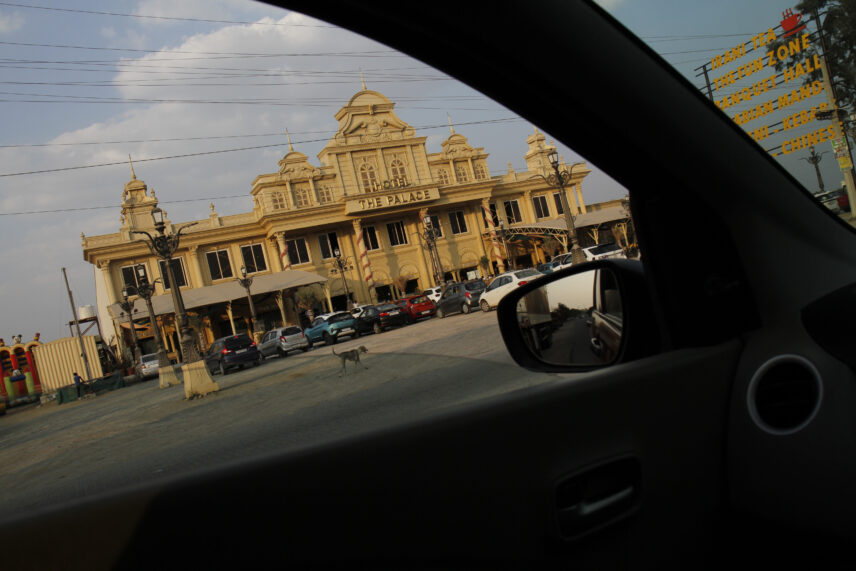
Facades of buildings, like faces, can wear masks. They can masquerade as something they are not. Hotel: The Palace, situated on India’s National Highway-65, between the big city of Hyderabad and the small town of Sangareddy, is both and neither of its named components. In the local parlance, a “hotel” is a place to eat, but not really a place to stay. In the south-central landscape of India, where ancient rocks are being eaten by the cement of urbanization, what sits along the highway as it cuts through the countryside has a strange hybrid feel. There are carts offering sugarcane juice and people selling fruit from their bikes alongside larger shops, tented “Himalayan” sexual health clinics, and corrugated metal scrap dealers (kabaadiwalas)—a veritable gallery of wares sitting right alongside vehicular traffic. In this environment, The Palace is also a hybrid: a cross between the quintessential highway dhaba and something more middle-class, but in this case, with palatial aspirations. Its broad menu is mirrored in its broad clientele, including travelers who would have avoided a more typical dhaba, packed with truck drivers on a break from their cross-country journeys.
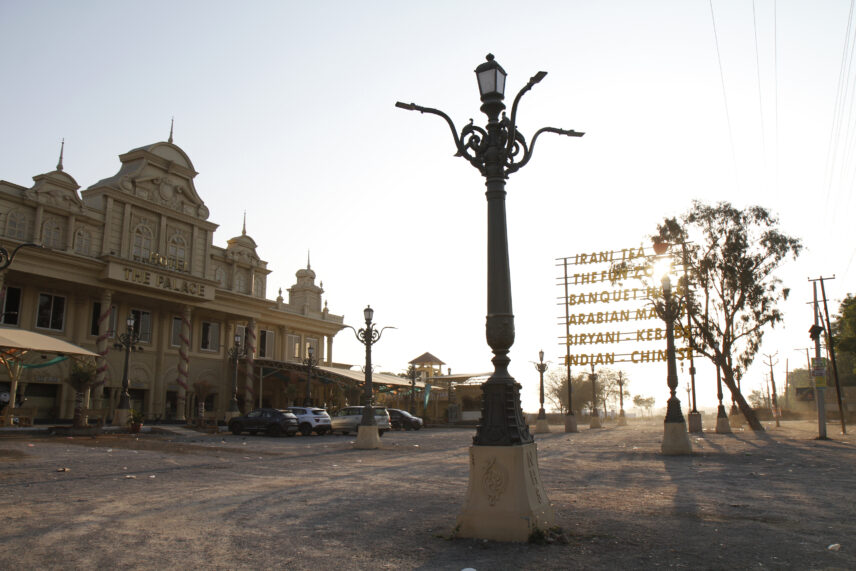
This hotel, like every other building, has a façade—but just one. Like a highway Sphinx, it has the body of a warehouse and a face smeared with the metaphorical makeup of many architectural styles in a medley that would trouble serious-minded architects. Yet, the “eyes” in the face of the building are downright middle-class Indian: aluminum-lashed, domestic residential sliding windows. It hides its interior by pure pastiche. But if we framed it in a certain way, “installed” in a show for certain artistic circles, it might also be high-order art, a social commentary of its own. As a multigenre architectural artifice capturing the changing landscape, why do we dismiss “remixes” like this as lacking design intention? Places like The Palace that emerge from this type of story are anything but generic; they are culturally authored, “graffitied” art. Should we think of them as ignorant of the norms, or irreverent?
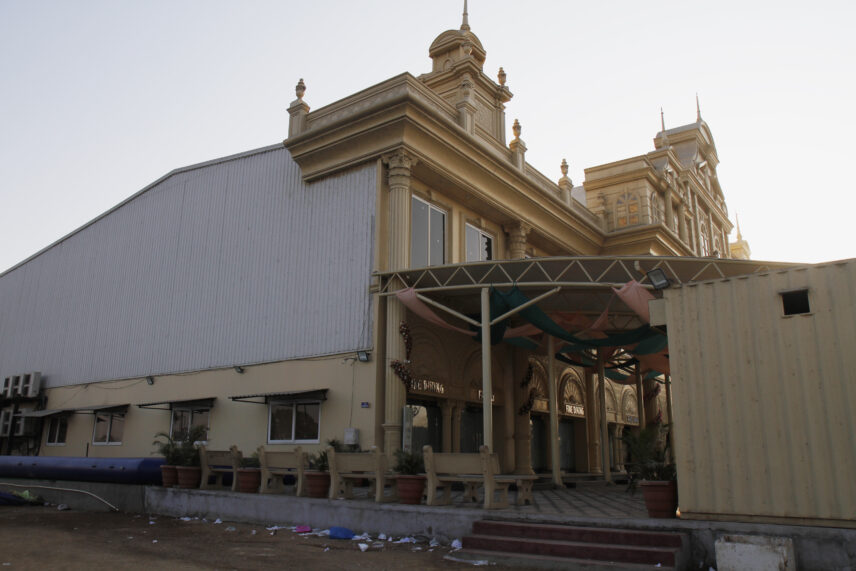
The beige of the facade is controlled. The aspiration seems to be to play “safe” or play “upper class.” The first few times we drove past this production, we missed the screaming clarity that this building is just sheer façade. The windows on the second floor are more like skylights and only allude to a window. In fact that’s true for the whole of the top floor. It does what an ornament would do: to highlight the wearer. Thrown over the head like a crown, this virtual top floor points to the reality below, which is of an eating place, accessorized by stations selling perfumes and play areas for children. As visual hook, it did deceive; we did notice the building when driving past. It’s only when we saw the warehouse body that its glaring disconnect with the face, smiling and with sliver shutter lashes, became apparent.
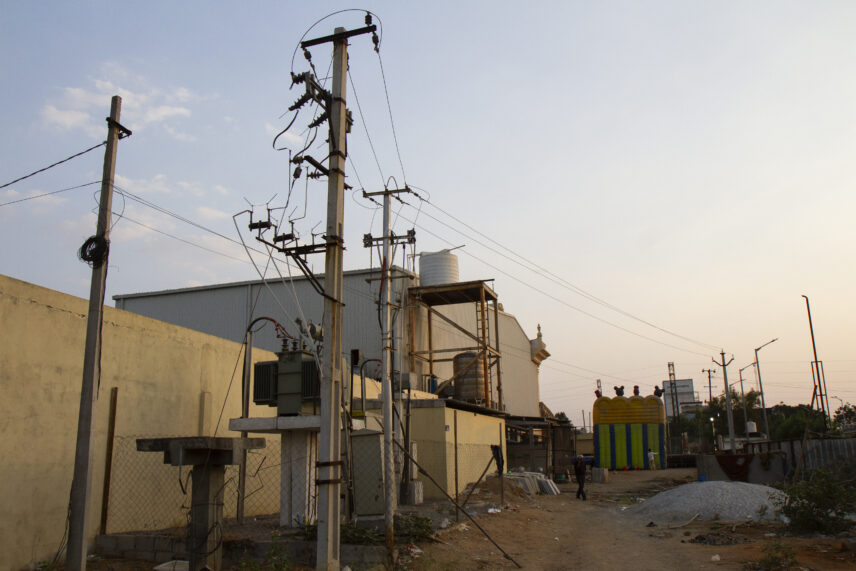
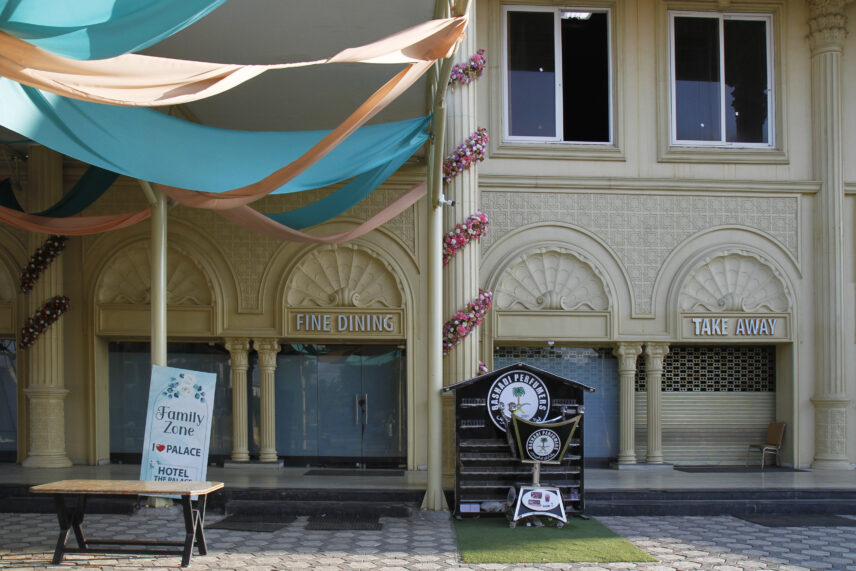
Taking a cue from them, a close look at the first of the two figures above shows similarly beige façade remixes from apartment towers at Hiranandani Gardens, in the prime and expensive real estate of Powai, Mumbai. While Hafeez’s palatial facades adorn expensive homes, the façade affixed to The Palace is only transitory, offering the promise of temporary lingering in palatial settings, on the way home. Seen from the perspective of the stability of land and property, this place, at its core, seems uncommitted to remain for very long. Similarly, its commitment to making the place convincingly real is limited to the façade, hinging thus on the visitors to play along with the make-believe as if it were real.
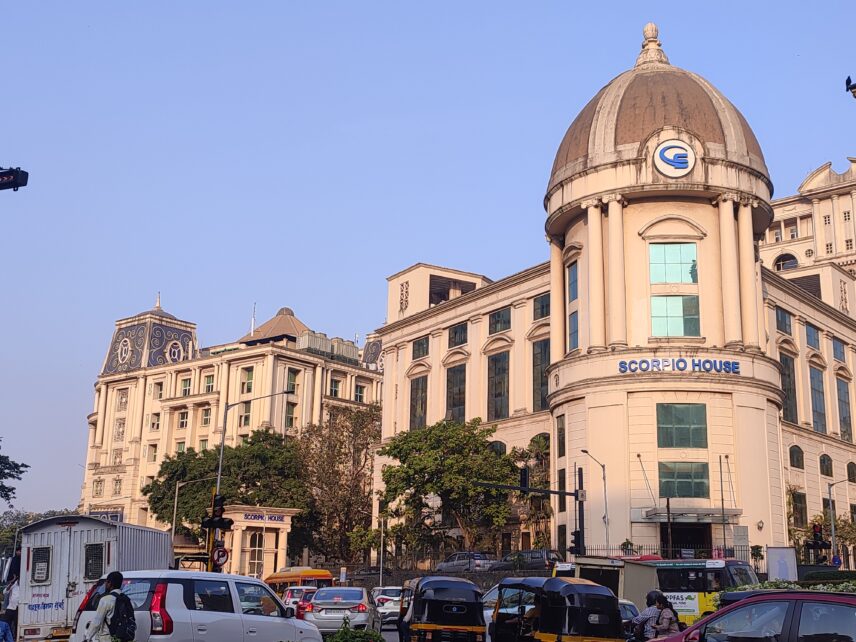
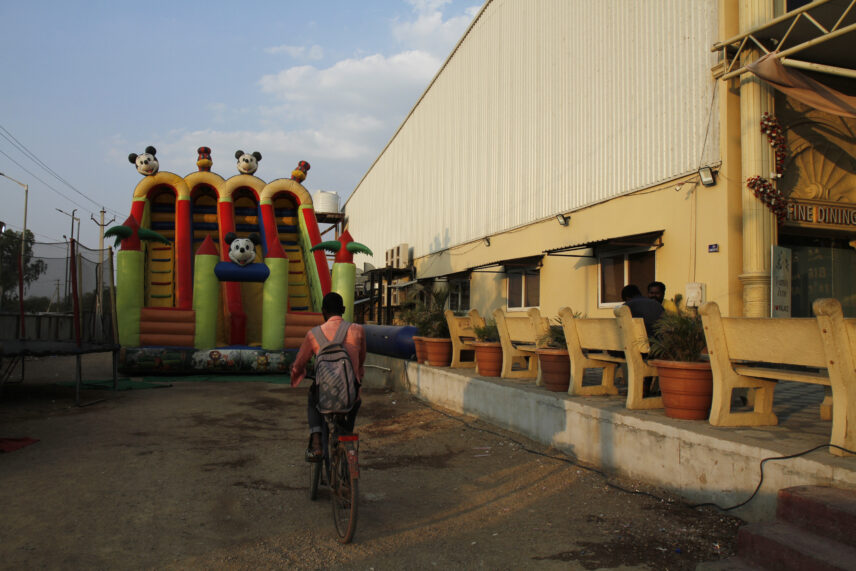
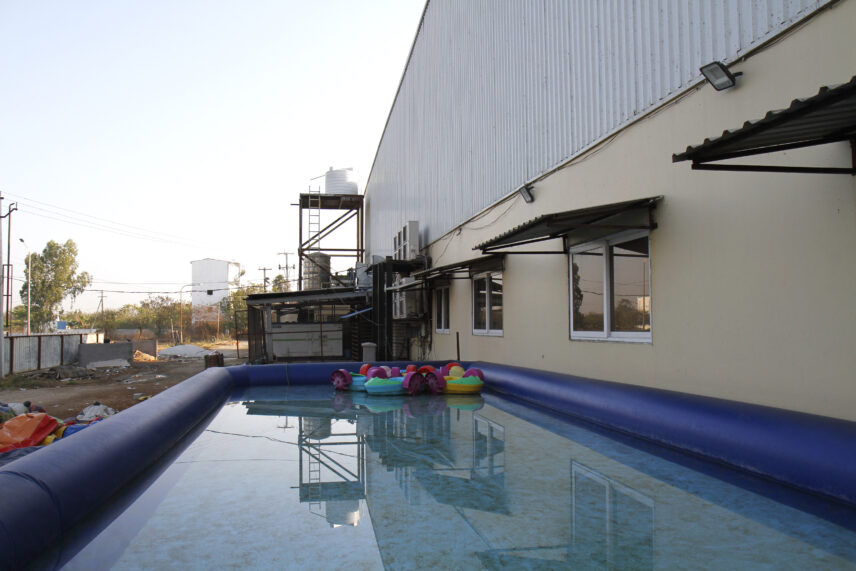
As highlighted by philosopher of technology Paul Virilio, the speed of technological advancements seems to diminish depth. Speed alienates engagement from going deep, keeping it to the façade, to the surface. Ribbon development, used by planners as a developmental tool, but which also sprouts as uplanned malaise, is an illustration of what mobility does to the interfaces along the margins of urban geography. Acceleration, which is a spiraling increase in speed, suggests less time of contact and friction with things on the way. There is only time enough to notice the façade, which, due to the speed of encounter, is more signal than sign. The highway is truly, strictly only infrastructural: a bare surface that provides the least friction possible to movement over very long distances. It is the speed that makes of the place a quickly readable image, a glimpse, that conveys the reassurance and promise of a decent stopping place. And that is quite a promise on the highway, a public infrastructure without any committed stopping places with clean toilets and trustworthy food. The Palace, with its deceptive name and façade, provides a reassuring mirage of a resting place on the highway desert.
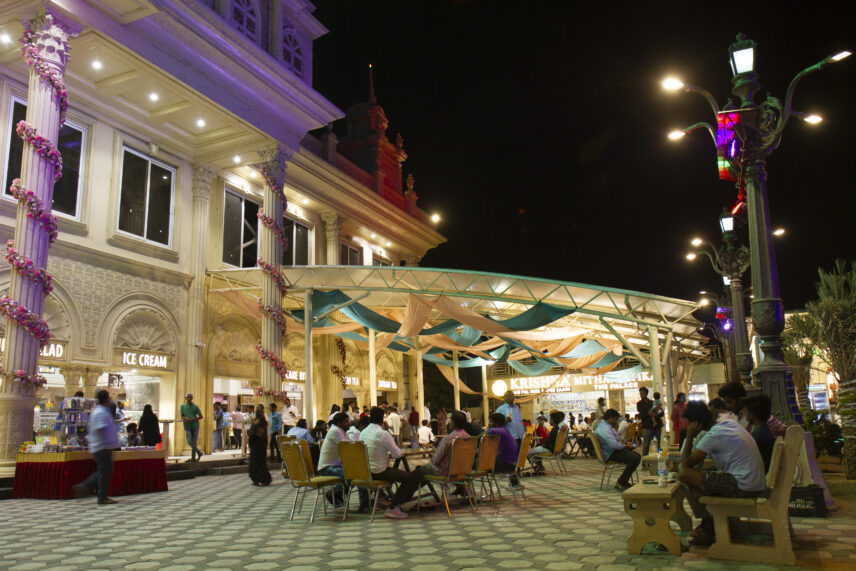
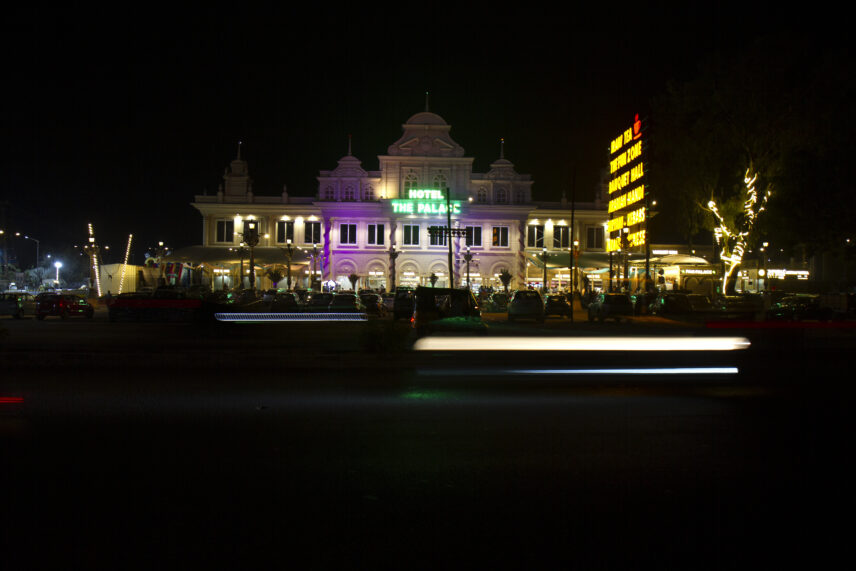
During our ride back from sampling the evening ambiance and food, we were discussing The Palace as a transitory space, an image responding to the speed of the highway, when Qasimbhai, our driver, turned around and corrected us: The Palace was not just transitory, but was an evening destination for many families from the surrounding villages and even outer suburbs of the big city.
It was more than image, but an actual place to drive to in the evening, especially on weekends, family and all, for a full dining experience. It offered respite and a break from the peri-urban flow of everyday life, a deception made real by the performances of visiting, parking, and dining. In that sense, The Palace is a place with enough investment to continue existing only as a face, at least until it knows whether to grow a body or to vanish altogether because change would be rapid, progress would be swift, and development merciless in its 100 km/hr drive, forcing places like these to emerge, settle, and become part of the land, or just pack up and flee.
Acknowledgments
Sincere thanks to Akanksha Singh, Industrial Design Center, Indian Institute of Technology Bombay, India, for her timely support, without which the comparative image from Mumbai could not have been included in this article.

